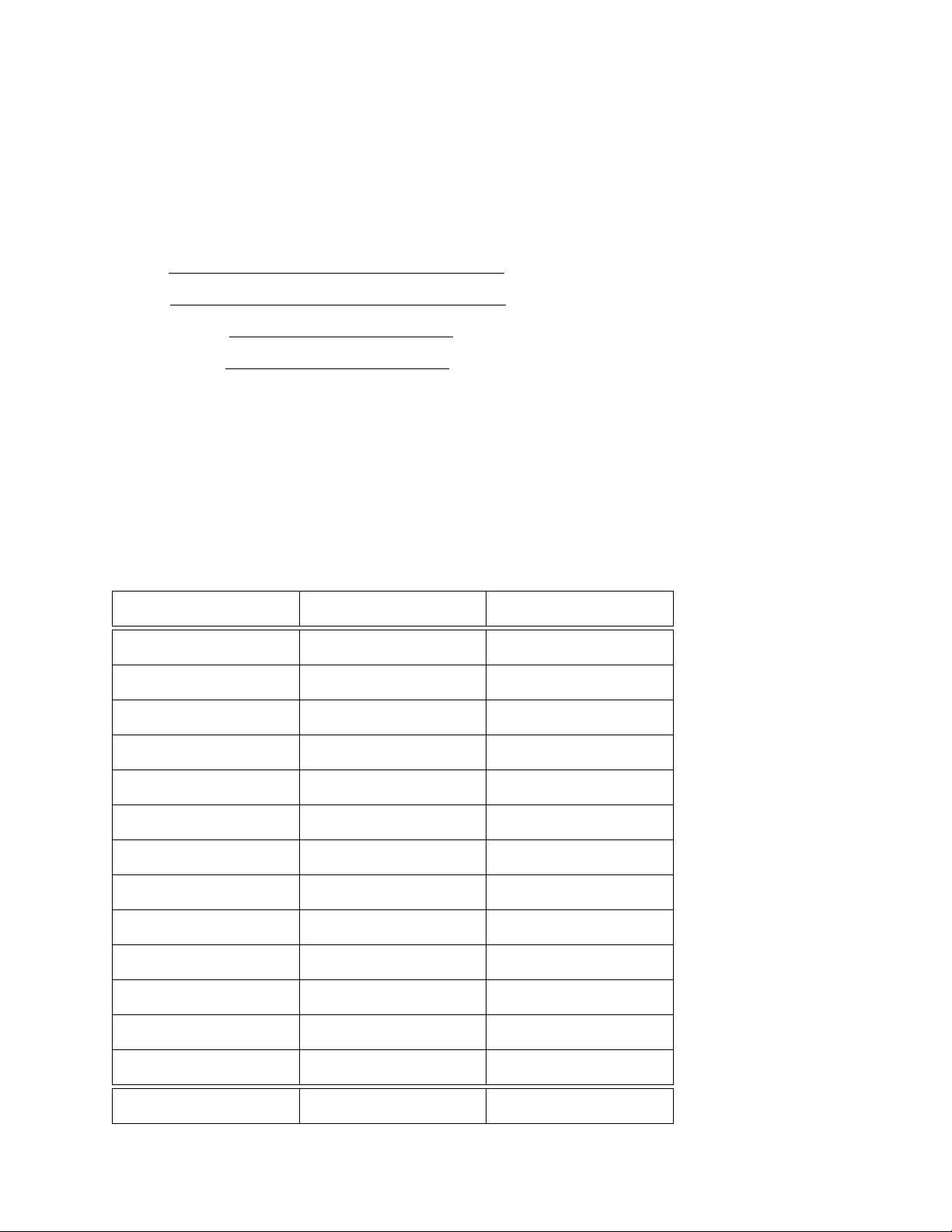
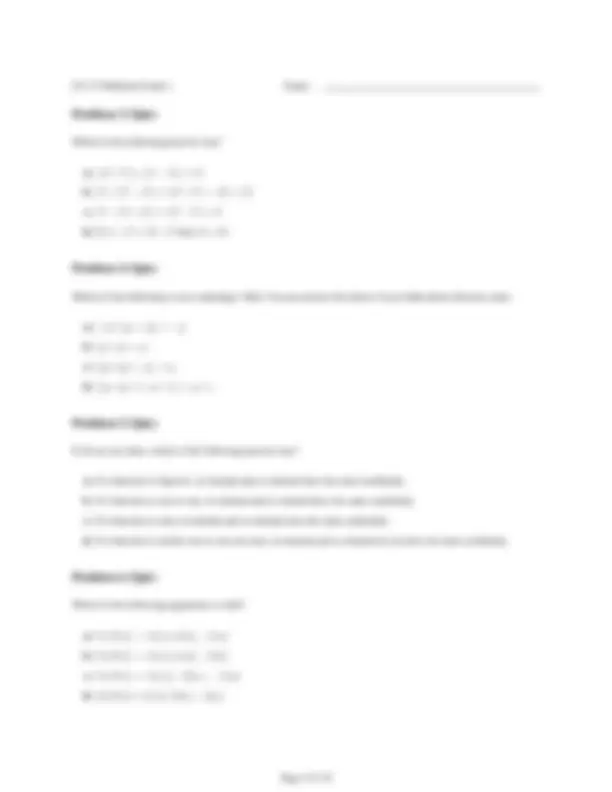
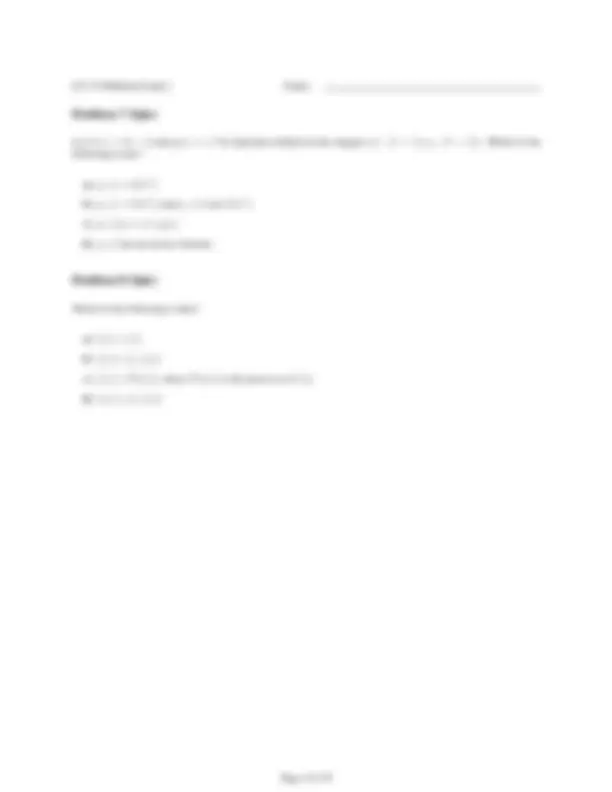
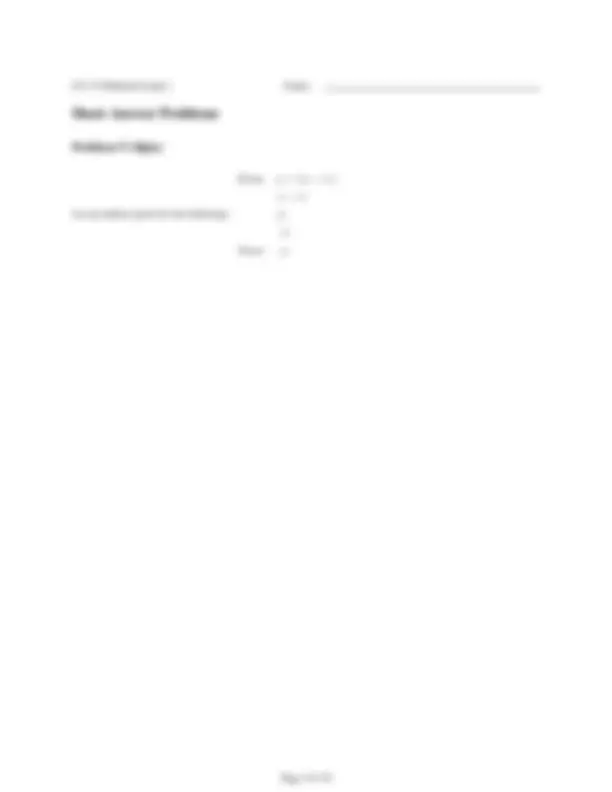

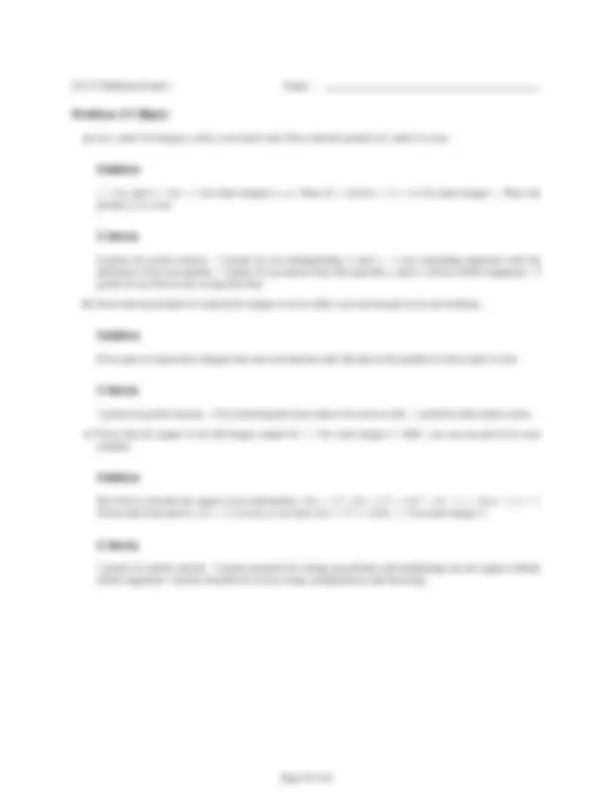



Study with the several resources on Docsity

Earn points by helping other students or get them with a premium plan


Prepare for your exams
Study with the several resources on Docsity

Earn points to download
Earn points by helping other students or get them with a premium plan
Community
Ask the community for help and clear up your study doubts
Discover the best universities in your country according to Docsity users
Free resources
Download our free guides on studying techniques, anxiety management strategies, and thesis advice from Docsity tutors
This is a midterm exam for cs 173, a course in discrete mathematics and formal systems, covering topics such as logic, set theory, and mathematical induction. The exam consists of multiple choice, short answer, and proof-based problems.
Typology: Exams
1 / 10

This page cannot be seen from the preview
Don't miss anything!







Name:
NetID:
Lecture Section:
Section Leader:
General Directions
Which of the following is logically equivalent to p → q?
a) q ∨ ¬p
b) the contrapositive of p → q
c) the inverse of the converse of p → q
d) all of the above
Which of the following is a negation of ∀x∀y[((x > 0) ∧ (y > 0)) → (x + y > 0)]?
a) ∃x∃y[(x > 0) ∧ (y > 0) ∧ (x + y ≤ 0)]
b) ∃x∃y[((x ≤ 0) ∨ (y ≤ 0)) ∧ (x + y > 0)]
c) ∀x∀y¬[((x > 0) ∧ (y > 0)) → (x + y > 0)]
d) ∃x∃y[(x ≤ 0) ∨ (y ≤ 0) ∨ (x + y > 0)]
Let f (x) = 3x + 2 and g(x) = x^2 be functions defined on the integers (f : Z → Z, g : Z → Z). Which of the following is true?
a) g ◦ f = O(x^2 )
b) g ◦ f = O(x^3 ), and g ◦ f is not O(x^2 )
c) g ◦ f (x) = f ◦ g(x)
d) g ◦ f has an inverse function.
Which of the following is false?
a) {x} ⊆ {x}
b) {x} ∈ {x, {x}}
c) {x} ⊆ P({x}), where P({x}) is the power set of {x}
d) {x} ⊆ {x, {x}}
Use an indirect proof for the following:
Given: p → (m → w) w → d m ¬d Prove: ¬p
Tell whether each of the following is True or False. The universe is all integers.
a) ∀z∀y∃x(x − y = z)
b) ∀y∃x∃z(x − y = z)
c) ∀x∀y∀z(x − y = z)
d) ∀x∀y∃z(x − y = z)
e) ∀x∃y∃z(x − y = z)
f) ∃x∃y∀z(x − y = z)
g) ∃x∃y∃z(x − y = z)
h) ∃x∀y∀z(x − y = z)
Prove that 8 n^2 + n is O( n
2 2 −^ 5).